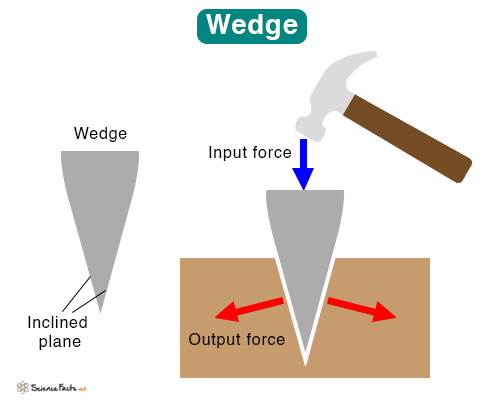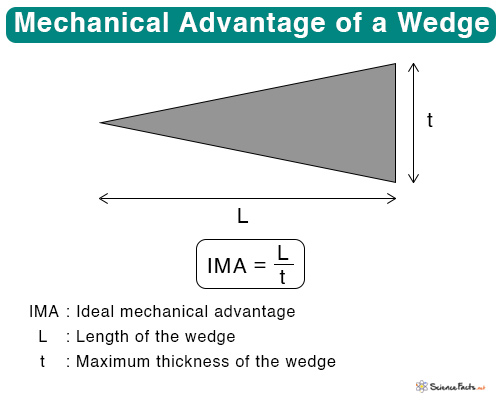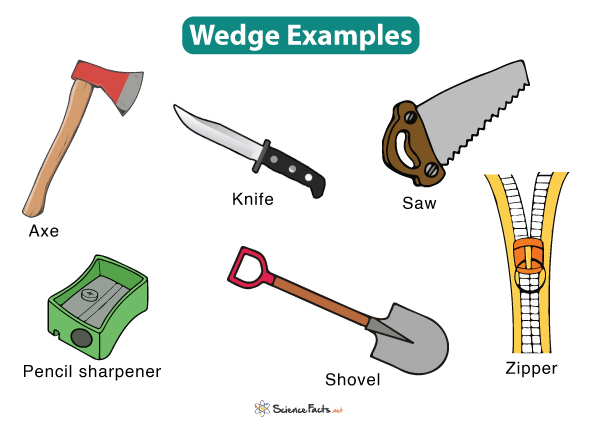How Does a Wedge Work
Mechanical Advantage of a Wedge
Types and Examples of Wedges
Applications and Uses of Wedges
The sharp end of the wedge is placed on an object’s surface, and a force is applied on the blunt end. The force overcomes the object’s resistance and pushes the wedge into it. The wedge now applies a force inside the object at a 90˚ angle to its slope. This output force can split the object into two. IMA = L/t Where, L: Length of the wedge t: Thickness of the wedge at its thick end The L/t ratio indicates the angle at the thin end of the wedge and hence the sharpness. Therefore, the force necessary to cut through the object depends on the wedge’s sharpness. A long and sharp wedge gives more mechanical advantage than a short and blunt one. Hence, it requires less force to cut through.
- Single Wedge: It has only one inclined plane. Examples: Chisel, shovel, doorstopper, pencil sharpener, cheese grater, potato peeler, and needle
- Double Wedge: It has two incline planes. They meet at the sharp edge. Examples: Knife, saw, axe, and zipper Other examples of wedges include a shim, staple, push pin, ice pick, tack, nail, and teeth.


